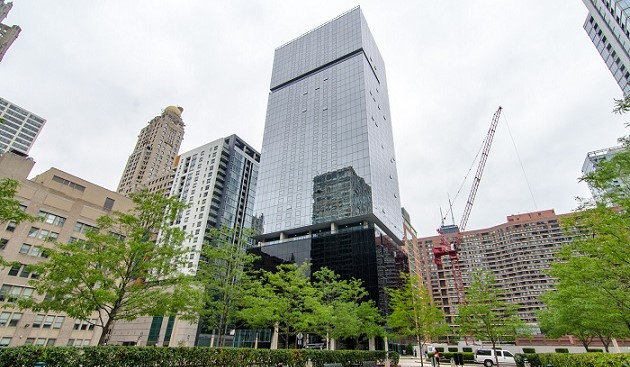 The Optima Chicago Center in Chicago's Streeterville neighborhood was just sold for $155 million to Edge Principal Advisors LLC, one of the most notable multifamily transactions in the US this year.
The Optima Chicago Center in Chicago's Streeterville neighborhood was just sold for $155 million to Edge Principal Advisors LLC, one of the most notable multifamily transactions in the US this year.
CHICAGO—Investors have been more active than expected so far this year. Some observers were concerned that a flood of new supply, rising interest rates and the low-yield environment would weigh on potential buyers, but instead, the capital kept flowing. According to JLL's H1 2018 US Investment Outlook, commercial real estate volumes for the first half of 2018 rose 3.4% year-over-year to reach $194.9 billion.
“We continue to see in many markets strong supply and demand dynamics,” Bruce Miller, co-head of the JLL capital markets group in Chicago, tells GlobeSt.com.
That always helps grease the wheels, but Miller says there are other factors in play. Many lenders seem hungry for deals, for example, including life insurance and CMBS lenders. “We have seen a fair number of investment sales take place because debt is so attractive and plentiful.”
Furthermore, a broad range of investors, including institutional buyers, high-net worth individuals and family offices, along with REITs and foreign companies, are all out there hunting for deals in the US, he adds. Occasionally, one group, such as investors from a particular global region, will temporarily drop out. “But then we typically see others step in and fill that void.”
Originally, JLL had believed investment volumes would drop 12% this year. But forecasters have revised that figure to just 5.0%.
A significant change has been a renewed focus on primary markets, especially by domestic buyers, after three straight years of declines. Transactions in primary metro areas made up 43.7% of total US investment in the first half of the year, up from 41.9% in 2017.
Although the investment volume for the office sector shrank by about 12% so far in 2018, that may turn around. “The office sector in particular is seeing a resurgence of large, single assets being marketed for sale, which is expected to boost office market liquidity in the second half of the year across a number of primary markets,” according to the JLL report.
Miller has already seen several groups buying office properties in cities where they have not invested before. Global investor Brookfield Property Partners recently paid $305 million for 175 W. Jackson, a historic 1.4 million square foot office building in Chicago's CBD. And Starwood Capital Group bought One South Dearborn, also in the Loop, this January for about $360 million.
Investors spent a total of $54.4 billion on US office properties in the first half of the year. And volumes hit $30.5 billion for industrial buildings, an 18.3% increase over the same period in 2017. A robust pipeline did not stop a 10.2% increase in the multifamily sector, where investors spent $66.2 billion. Hotels were the big winners, posting a 44% increase to $15.1 billion.
US real estate also attracted $23.6 billion in cross-border acquisitions, roughly the same as the first half of 2017. The liquidity and transparency of the US market, along with some overseas turmoil, ensures that “the US continues to be a top destination for foreign investors,” Miller says.
© 2025 ALM Global, LLC, All Rights Reserved. Request academic re-use from www.copyright.com. All other uses, submit a request to [email protected]. For more information visit Asset & Logo Licensing.








